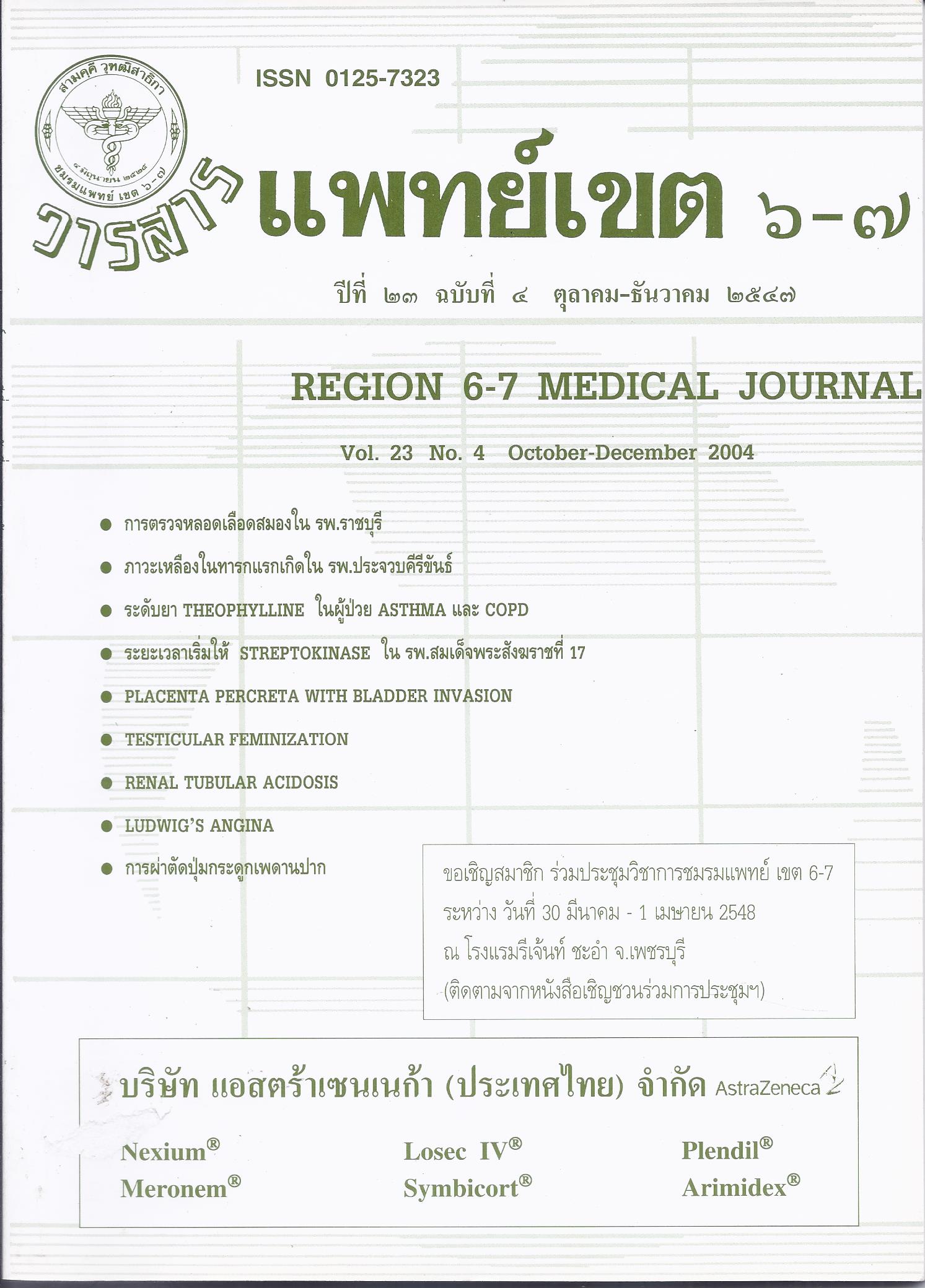การตรวจหลอดเลือดสมองในโรงพยาบาลราชบุรี
คำสำคัญ:
cerebral angiogram, subarachnoid hemorrhage, intracranial aneurysmบทคัดย่อ
Conventional cerebral angiogram is the "gold standard" and method of choice for detecting and determining anatomical characteristics of aneurysms to plan the appropriated treatment. Between January 2001 and May 2004, 112 consecutive diagnostic cerebral angiogram performed at Ratchaburi hospital were study retrospectively. The common reason for cerebral angiogram was to rule out and determining site of aneurysm (78.89%) in subarachnoid hemorrhage patient. There were 54 (60.63%) intracranial aneurysm in 92 procedures: anterior communicating aneurysm 36.84%, posterior communicating aneurysm 15.78%, basilar tip aneurysm 8.77%, middle cerebral artery aneurysm 5.23%, internal carotid artery aneurysm 24.56% and multiple aneurysms 3.37%. The neurologic complication rate was 3.26%.
ดาวน์โหลด
เผยแพร่แล้ว
รูปแบบการอ้างอิง
ฉบับ
ประเภทบทความ
สัญญาอนุญาต
ลิขสิทธิ์บทความเป็นของผู้เขียนบทความ แต่หากผลงานของท่านได้รับการพิจารณาตีพิมพ์ลงวารสารแพทย์เขต 4-5 จะคงไว้ซึ่งสิทธิ์ในการตีพิมพ์ครั้งแรกด้วยเหตุที่บทความจะปรากฎในวารสารที่เข้าถึงได้ จึงอนุญาตให้นำบทความในวารสารไปใช้ประโยชน์ได้ในเชิงวิชาการโดยจำเป็นต้องมีการอ้างอิงถึงชื่อวารสารอย่างถูกต้อง แต่ไม่อนุญาตให้นำไปใช้ในเชิงพาณิชย์




